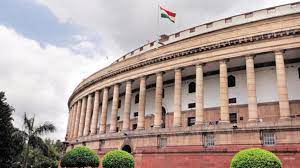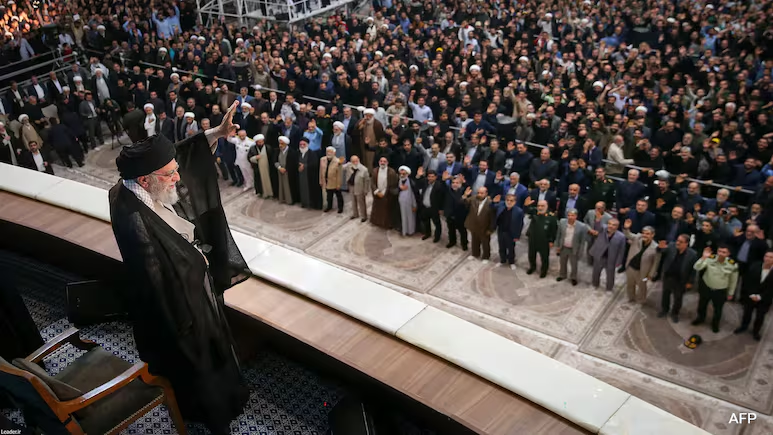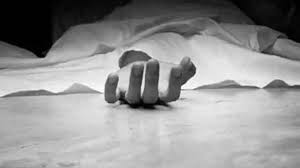Modi govt moves decisively on women’s quota bill as Oppn wields OBC card
Parliament moves into its new home, PM Modi urges MPs to forget past bitterness
New Delhi: Prime Minister Narendra Modi’s determined move to get reservation for women in legislatures promises to shape the political discourse ahead of key state polls and Lok Sabha elections, and a parliamentary approval to the long-contested proposal will be used by the BJP to burnish his credentials as a decisive leader.
However, it is also likely to bring to a head the inherent opposition the idea has generated around the demand for a separate quota for OBCs, especially from regional parties from Hindi-speaking states which draw support from backward castes, with silent support from OBC satraps from within major parties as well.
Parties like the RJD and the Samajwadi Party have indicated their opposition by seeking “quota within quota”, while JD(U) leader and Bihar Chief Minister Nitish Kumar has welcomed the bill but joined them in calling for an OBC quota. The Congress, too, has echoed the view.The BJP, however, has now succeeded in winning over a big chunk of OBC votes and is confident of dealing with the political challenge.Under Modi, the party has succeeded in building a strong constituency for itself among women voters with his welfare policies and believes that the proposed law can help it make more inroads over the caste faultlines.
Earlier, it was the vocal protests from opposition satraps like Mulayam Singh Yadav and Lalu Prasad Yadav and internal opposition, more so from OBC leaders, from within major parties like the BJP and the Congress which scuttled numerous attempts to get parliamentary nod to similar bills despite the public support the leadership of key national parties extended to the idea.
With the BJP enjoying a strong majority in Lok Sabha and many unaligned parties, including the BJD, BRS and the YSR Congress, now supporting the women’s reservation, the Modi government is better placed than previous dispensations to have the ‘Narishakti Vandan Adhiniyam’ passed.The bill’s provision that the new law once enacted will come into force only after a fresh census and delimitation means that the women’s reservation is unlikely to be in effect in the 2024 Lok Sabha election, a move which has drawn immediate criticism from the opposition.
The BJP has been principally in support of such a bill and it found mentions in its manifestoes for the 2014 as well as 2019 Lok Sabha elections. The Congress’ manifesto for the 2019 polls also evinced support.The BJP has, however, accused the Congress of paying lip service to the agenda of women’s representation while in practice sabotaging it through its alliance partners and some of its own MPs.
The Vajpayee government brought the bill several times to Parliament but could never get it passed in Lok Sabha, a House where the BJP-led NDA had a majority unlike in Rajya Sabha. Protests from within his alliance and from the opposition had ensured it, those familiar with the developments said.A BJP leader noted that the Congress-led UPA got the bill passed in Rajya Sabha with the support of the main opposition party (BJP) but never pushed for its passage in Lok Sabha, where it had a majority.
OBC satraps, who dominated politics in states like Uttar Pradesh and Bihar for over 25 years before the BJP’s ascendence in 2014, were fiercely opposed to the idea, calling it elitist and one undermining the interests of backwards.Then Janata Dal leader Sharad Yadav said controversially that “par-kati mahilayen” (women with short hair) will be the main beneficiaries of women’s quota, Lalu Prasad Yadav described it as a “grave threat” to social justice while Mulayam Singh Yadav claimed urban women will rise at the cost of their rural counterparts as the latter are not “attractive”.
Firebrand BJP leader Uma Bharti, who comes from the OBC Lodh community, had also opposed the bill in the 1990s without the “quota within quota”.That many MPs from national parties also felt threatened by such a quota in an era when coalitions ruled and several interest groups needed to be humoured by different governments meant that various versions of such a bill, first brought by the H D Deve Gowda government in 1996, could never see the light of the day.
Earlier in a historic transition, the Parliament moved into a swanky new complex on Tuesday, with Prime Minister Narendra Modi urging MPs to forget all past bitterness and start a new chapter and the introduction of the women’s reservation bill taking centre stage.Bidding goodbye to the adjacent colonial era Parliament building, the Lok Sabha and the Rajya Sabha met for the first time in the new home on the second day of the five-day special session during which Modi made an impassioned plea to both houses to unanimously approve the women’s reservation bill Narishakti Vandan Adhiniyam.
The Constitution (One Hundred and Twenty Eighth Amendment) Bill, 2023, which envisages reserving one-third of the seats in Lok Sabha and state assemblies for women, was the first legislative measure to be introduced by the government in the new building, a day after it secured Union Cabinet’s approval.Shortly before the introduction of the bill in the Lok Sabha, Modi told the lower house that the government wants more and more women to join the development process of the country.
“For that work of giving power to women and for many such noble works, God has chosen me….This date of September 19 is going to be etched in history.”The old Parliament building, which has stood for over 96 years as a sentinel of time and a repository of India’s democratic journey and where its first prime minister Jawaharlal Nehru delivered his iconic “tryst with destiny” speech” to mark India’s independence from colonial rule, will now be called the ‘Samvidhan Sadan’. The new four-storey triangular shaped complex has been named ‘Parliament House of India’, according to an official notification.
Modi called on MPs to forget all past bitterness and start a new chapter, asserting that whatever they are going to do in the new complex, should be an inspiration for every citizen of the country.”When we are starting a new chapter, we should forget all past bitterness,” he said, adding the new Parliament building reflects the aspirations of 140 crore Indians.Parliament, Modi said, is a supreme place to serve the nation. Parliament is not a place to work for growth of a party but for development of the nation, he added.
The prime minister also remembered ‘shramjeevis’ (labourers) who were part of the construction of the new building.Speaking at the first sitting of the Rajya Sabha, Modi said the women’s reservation bill will be taken up for debate in the Lok Sabha on Wednesday.Modi expressed confidence that the bill will finally become law and ensure Narishakti’ can work towards nation-building with the new energy of the new building.
Noting that the Rajya Sabha is considered the Upper House of Parliament, he underlined the intentions of the makers of the Constitution that the House become a centre for serious intellectual discussions rising above the ebb and flow of political discourse while giving a direction to the nation. He described today’s occasion as historic and memorable.The House also witnessed heated exchanges between the treasury and opposition benches after Congress leader Mallikarjun Kharge remarked that all political parties only give tickets to those women from backward classes who cannot assert themselves.
Finance Minister Nirmala Sitharaman hit back to say the “sweeping statement” of Kharge that all parties do not choose effective women candidates is “absolutely unacceptable”.Addressing a function in the Central Hall of the old Parliament building earlier in the day, Modi called for expanding the canvas to build a stronger India, and said all reforms and new laws going forward must have rising aspirations of the country as their priority.”Is it possible to draw a big picture on a small canvas? No! In the same way, we cannot mark out the picture of ‘Bhavya Bharat’ if we have a small canvas of thinking.”
Modi urged the members to reaffirm the commitment to make India a developed nation by 2047 and described the move into the new Parliament building as a new beginning towards a new future.Dressed in colourful attire, members of the Lok Sabha and the Rajya Sabha got their group photograph clicked in the old Parliament building with its circular design and an impressive colonnade of 144 creamy sandstone on the first floor, hours before the legislative proceedings shifted to the new Parliament House. The old building was opened on January 18, 1927 by Lord Irwin — the then British viceroy — amid fanfare.
Women members turned up in colourful sarees, while most of their male counterparts preferred white kurta-pyjamas with vibrant waist-coats for the photo-session.Led by Prime Minister Modi, several MPs walked from the old to the new Parliament building after the Central Hall event. Modi was flanked by Defence Minister Rajnath Singh, Home Minister Amit Shah and BJP chief JP Nadda. NDA MPs also raised slogans like ‘Bharat Mata ki Jai’ and ‘Vande Matram’.
Lok Sabha Speaker Om Birla also walked to the new Parliament separately.Holding a copy of the Constitution, Congress leader in the Lok Sabha Adhir Ranjan Chowdhury, along with Rahul Gandhi and several other Congress and opposition leaders, entered the new complex.The National Emblem made of bronze has been cast at the top of the Central foyer of the new Parliament building which boasts of a palette of colours and architecture that takes its cue from everything Indian, from ancient to medieval.
The new structure, inaugurated by Prime Minister Modi on May 28, has artwork narrating India’s democratic traditions from the Vedic period to the present day.The tender to construct the new Parliament building was awarded to Tata Projects in September 2020 at an estimated cost of Rs 861 crore. Later, the cost rose marginally due to certain changes.The new Parliament House has a built up area of 65,000 square metres and has two chambers – an 888-seater Lok Sabha, which can accommodate 1,272 members for the joint sitting of both the Houses, and a 384-seater Rajya Sabha chamber.
At the Central Hall event, Speaker Birla urged parliamentarians to engage in meaningful and positive debates while making laws and fulfil the dreams and aspirations of the people of the country to make India a developed nation.Rajya Sabha Chairman Jagdeep Dhankhar called for burying the strategy of “weaponising” disturbances and disruptions in parliamentary functioning, saying these are antithetical to democratic values.”As we march into the new Parliament building, we must enhance cooperation and consensual approach. Time for us to bid farewell to confrontational stance and resolve to ever keep national interest uppermost.”Kharge said parliamentarians should commit to preserving constitutional values and ideals.
Iran–Israel Conflict Escalates: Khamenei Vows No Mercy, US Warns Iran
Tehran/Washington/Jerusalem, June 16: Tensions in the Middle East spiraled further as Iran…










